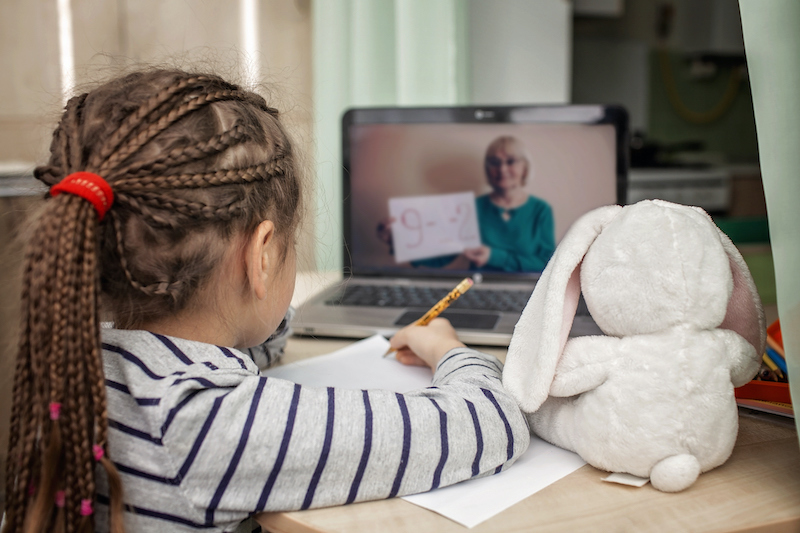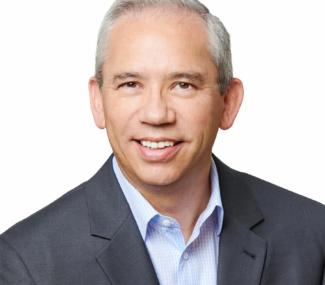How Social Distancing Could Change the Education System

This week we’ll continue to explore the potential lasting impacts of the COVID-19 pandemic by looking at how an area familiar to everyone may change: K-12 education.
Similar to other changes related to social distancing, the pandemic is accelerating the adoption of technologies and behaviors that were likely inevitable. However, “inevitable” may have taken 5 to 10 years (or longer) at organic adoption speeds. This adoption is leaving its mark on corporate America and education is unlikely to be an exception.
As with all discussions about the future, we follow our founder Alvin Toffler’s perspective. Our goal is not to predict one future outcome but imagine many potential outcomes, allowing organizations to prepare for multiple scenarios. That way we’re not constrained by what’s most likely or desirable, but we explore what’s possible.
We invite you to imagine with us the coming changes and how your organization may need to prepare.
The Catalyst for Lasting Change
Nearly every quality-of-life metric improves with higher levels of education – economic (income, unemployment rate), physical health (life expectancy), and mental health. Improving how we educate should be a high priority. We also know that a child’s educational outcome is closely tied to location. Should the zip code you were born in dictate the course of your life?
Shelter-in-place policies are driving a dramatic and comprehensive use of distance learning, creating a mass experiment forcing the adoption of new behaviors. Given the likely duration of social distancing (at least one full semester, maybe more) we see this as a catalyst for significant changes in learning.
However, the adoption of new behaviors is only part of what’s required for lasting change. The other part is the infrastructure that enables distance learning; the rapid investment and build-out will be necessary for long-term use.
Education and Location
K-12 education is such a broad topic, and we won’t pretend we can address all of its challenges here; for today, we’ll focus on location.
In the U.S., there are approximately 57 million students in K-12 schools with about 90% in public schools. For those 51 million students, the number one driver of their access to and experience with education is location. Literally, the school district where they reside. Currently, any improvements in education are district-by-district, school-by-school; there’s less opportunity for a leverage-able, scalable solution.
On the opportunity side, distance learning removes this constraint for students; it creates the ability for every student to have access regardless of location. While 100% online isn’t a replacement for the entire school experience, it does offer a mechanism to supplement an underperforming school system or provide access to courses not available locally.
On the challenges side, online learning may not be conducive to every student’s learning style. Additionally, there are other prerequisites to support online learning:
- Content – Online-optimized content is different than content optimized for the in-person classroom. To be effective at scale, content will need to be updated.
- Capability – The nature of the activity of teaching changes in an online environment with potentially large numbers of students. The process of teaching (e.g., lesson planning, lecturing, one-on-one support) will need to evolve, including teacher training, to be effective in an online environment.
- Connections – Like anything internet related, great content is meaningless if the intended audience doesn’t have access. In this case, fast, reliable, and affordable internet connections into the home are a requirement.
- Home environment – This includes everything from having access to a device (one survey found 1 in 4 low-income teens does not have access to a home computer) to a suitable location and supportive household members.
These are all significant challenges that need to be solved so that we don’t exacerbate rather than bridge the digital divide.
Imagine If… A possible future of K-12 Education
For our imagination exercise, we are going to assume away these challenges – we know we have the ability to fix them. While this isn’t an immediate future, we still learn from exploring what’s possible in a world of large-scale distance learning.
Redefining “school” – If the internet disaggregates education content like it did for other types of content (e.g., we no longer buy an album to get a song or buy a magazine to get an article), online learning can parse out the school experience and be included in optimal solutions for content delivery, hands-on learning, physical well-being, social development, and even ways to enable in-person instruction. One provider no longer has to be responsible for all instruction. Perhaps, post-COVID-19, there will be hybrid models. Some education occurs in person (science labs) and some is remote or online. It could be based on student needs or school gaps or deficiencies and could extend school capabilities and reach. During COVID-19, a school could define their students into groups so that half attend in person at a time, alternating with their classmates, allowing for social distancing. (Could this lead to the demise of the iconic “snow day,” or convert them to “online days”?)
Expanding access – What if all students had access to the best teachers, and it wasn’t just driven by school district? In an online environment, a teacher could have a class of thousands based on the quality of their delivery and their track record with student achievement. This could redefine teacher compensation; parents would vote with their wallets (e.g. subscription services) on which teachers they want to use. Shouldn’t the most effective math teacher, the most inspiring English teacher, and the art teacher that creates the most passion deserve market-driven compensation? Could this create the age of the celebrity teacher while providing all students access?
Redefining the teacher – Distance learning, parsed by course, can also redefine who a “teacher” is (i.e., the source of content). Could the New York Times teach a writing class, National Geographic teach science (live from remote parts of the world), or Google teach coding? Imagine the menu of options a student would have to create their own personalized curriculum (that met mandatory requirements for advancement). This also opens the path to avatar/AI-based teaching.
Decouple age from grade – Online learning can also enable personalized learning. Students could have customized curricula based on their learning style, interests, and pace of progress. This means “grade” either becomes strictly a time-driven construct or a progress-driven construct, but no longer tied to both as it is today. AI could help remediate and confirm progress in students across a spectrum of learning styles. Social promotion would be a thing of the past as individual. Competency-based progress could not just measure but also improve learning outcomes.
We can use imagined futures to determine which future we want to have or want to avoid and then actively prepare. In this case, just severing the link between education and location and decoupling age from grade would create seismic shifts in our education models. If we start with the goal of producing happy, healthy, productive members of society who have a passion for learning, across learning differences, we can look more broadly at tools and capabilities we have, or need to develop, to achieve this goal.
What would the world look like if every student in the US graduated high school and had a solid understanding of reading, writing, arts, and STEM – and the capacity to learn new skills as the world evolves? This would be an economic accelerator and, as noted in the beginning, would positively impact quality of life metrics across a variety of dimensions.
Other Societal Impacts
How can imagining this future help us today?
The COVID-19 pandemic may impact education beyond the mechanics of learning. The prominence of science and healthcare and the appropriate heroic recognition of scientists, physicians, and nurses could influence a generation of students in their career choices, similar to how the moon landing inspired a generation of engineers. Likewise, the value of front-line service jobs could elevate societal appreciation for and attractiveness of those roles.
Lastly, our collective, global experience attacking the coronavirus is highlighting the importance of inter-disciplinary collaboration to solve global-scale problems (e.g., scientists, physicians, data scientists, software developers, social scientists, political scientists, economists, psychologists). This should provide a blueprint for attacking other challenges like climate change, access to water, income inequality, energy, and food scarcity, a lesson that shouldn’t be lost on today’s educators.
Hopefully, this provides some insight into how Toffler Associates can explore imagined futures. As we noted, the purpose is not to predict a single answer. By exploring a range of futures, we understand the risks and opportunities presented and from there, set out to influence the future we want.
Please let us know if you have a future you would like to explore.
For more from the COVID-19: What Now and What Next series:
- Please contact us if you have any questions about what now or what next.
- Subscribe to our blog to make sure you get all updates in the series.
- Watch our on-demand webinar, COVID-19: Preparing for Uncertainty and Maintaining Resilience
{{cta(‘8f7815e1-b0f9-4dba-86f1-0d46aa023c6d’,’justifycenter’)}}
- Categories
- Workforce of the Future


 About the Authors
About the Authors